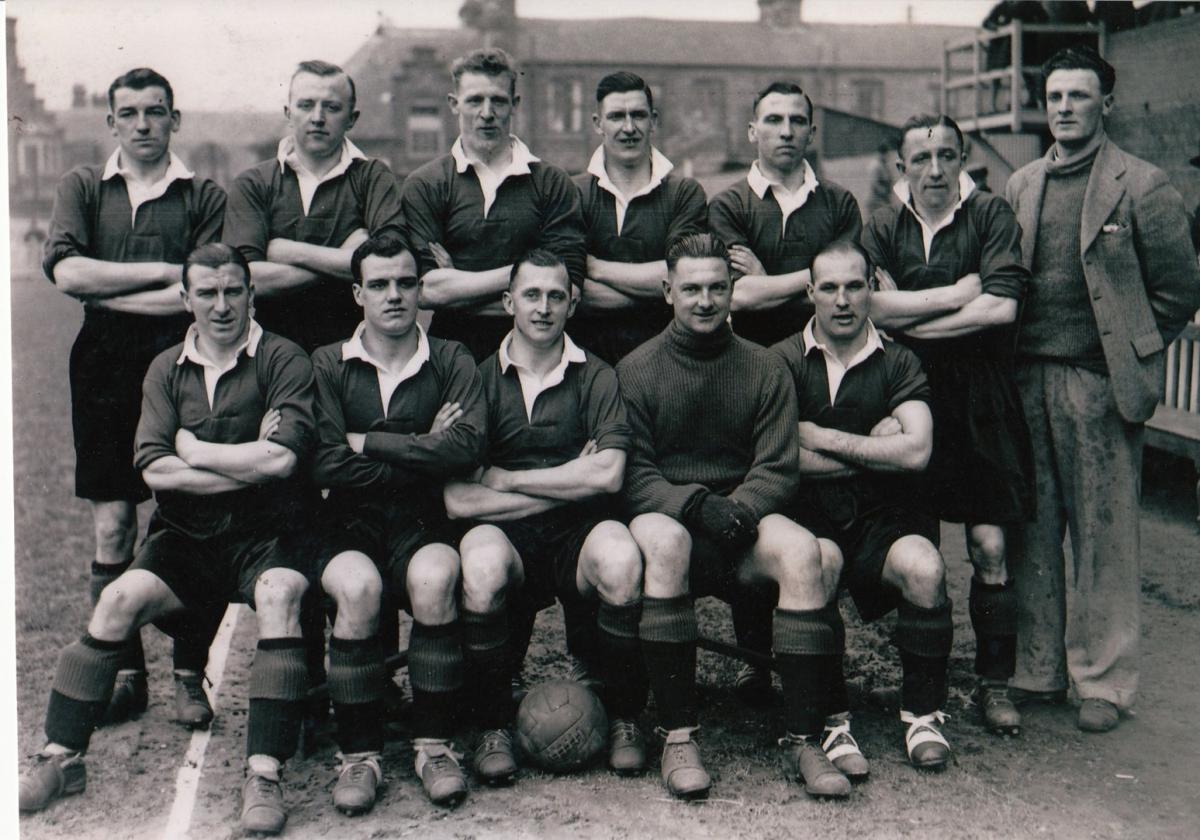YORK City football club is asking fans past and present to help it come up with suggestions for names for the four apartment blocks which are to be built on its former Bootham Crescent ground.
Now a section 106 agreement has been agreed, Persimmon Homes is expected to start work on redeveloping the old ground (home to York City for 89 years up until 2021) later this year.
The club is keen to put forward some suggestions for names for the four blocks, and wants fans to help - though it stresses the final decision will be up to Persimmon and the city council.
The council has stipulated that the blocks should be named after City heroes of the past – not those who are still living.
But, with the club celebrating its centenary this year, that still leaves plenty of candidates from the Minstermen's rich history.
“Obviously, there will be players who are so often fans favourites and whose achievements are perhaps more commonly known,” said the club’s stadium development director Ian McAndrew.
“However, there are also many others who have over the years contributed to our club’s successes - people from managers and trainers to groundsmen or turnstile operators, from 50/50 ticket volunteers to fans who have left their mark on this great old stadium and whose contribution deserves to be remembered here.”
Ideally, the club would like to see each block named after a City hero (sporting or otherwise) from a different era.
To help you come up with suggestions, over the next four weeks The Press will be looking back at four distinct eras of the club’s history.
We start today with the period 1932-1946 - the early years at Bootham Crescent.

The ‘new’ entrance to York City’s Bootham Crescent ground in 1934
The club was actually founded on May 6, 1922, says club historian Paul Bowser - making this its centenary year.
For the first ten years it was based in Fulford, before moving to Bootham Crescent (the former home of York Cricket Club) in the summer of 1932, after the site had been vacated by York Cricket Club.
The City board of directors showed great foresight and determination to press ahead with the move, Paul says.
"Members of the Supporters’ Club also, literally, helped lay the foundations for the new stadium, by lifting and shifting tonnes of soil and rubble from Fulford. They also helped construct the Popular Stand and raised the £1,500 sum to pay for it. Amongst the many helpers were the likes of Harry Ward, ‘Taffy’ Shaw, and Arthur Russell."
Bootham Crescent was officially opened on August 31 1932, when City welcomed Stockport County as the first Football League visitors. The game ended as a 2-2 draw, and Tom Mitchell scored City’s first-ever goal at the new ground.
The 1930s saw the club struggle financially, but fortunes improved on and off the pitch in 1937/38 as the team reached the FA Cup quarter finals. The attendance record at Bootham Crescent was broken in four consecutive rounds against Coventry City (13,917), West Bromwich Albion (18,795), Middlesbrough (23,860) and Huddersfield Town (28,123). Local lad Reg Baines (1907 – 1974) had been City’s top scorer during the first season at the ground, and figured prominently during the cup run.
The outbreak of the Second World War in September 1939 resulted in the suspension of the usual leagues, but football continued on a regional basis with guest players allowed. City reached the semi-finals of the regional FA War Cup in 1942/43, but the greater good was that football was seen as being important for morale and York City FC more than played its part.

'Mr York City', aka club secretary Billy Sherrington, left, with Tom Mitchell opening the post during the 1937/38 FA cup run
Bootham Crescent also did its bit for the war effort, with the Main Stand dressing room and corridors, and the Popular Stand being commandeered as air raid shelters for the staff and pupils of the nearby Shipton Street School.
The ground was slightly damaged during the infamous Baedeker Air-raid on York in April 1942, but adjoining streets were less fortunate. Next to the school were two rows of houses called Pickering Terrace, and they suffered a direct hit from the bombs with a mother and her young daughter being amongst the fatalities.
‘Mr York City’ - club secretary Billy Sherrington - was a central figure in keeping the club running through the war years, alongside a temporary post working for the Civil Service.
"It is likely that no man spent more time working at the ground than Billy between 1932 and 1960," Mr Bowser said.
In May 1946, Jack Pinder was honoured with a second benefit for his playing service which had begun in 1929 playing for the reserves and would end in 1948. Another key player for the club throughout the war years and into the early 1950s was Bert Brenen, whilst coal miner Sam Gledhill also gave fine service during this period and made over 200 wartime appearances.
The ground and club came out the war in a far better position than they had entered it, Paul says. "And there were exciting times ahead."
To suggest the name of a City hero from this period for one of the planned Bootham Crescent apartment block, simply fill in the online form here












Comments: Our rules
We want our comments to be a lively and valuable part of our community - a place where readers can debate and engage with the most important local issues. The ability to comment on our stories is a privilege, not a right, however, and that privilege may be withdrawn if it is abused or misused.
Please report any comments that break our rules.
Read the rules hereLast Updated:
Report this comment Cancel